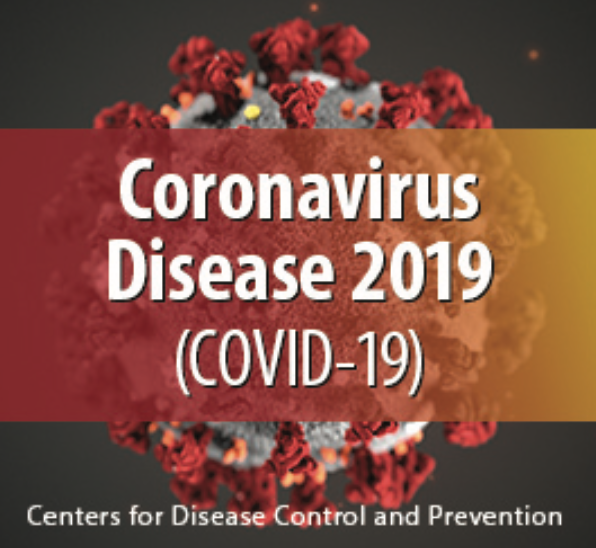by Kate Evans
On May 5, the World Health Organization cancelled its designation of COVID-19 as a public health emergency. The United States also removed its designation of COVID-19 as a public health emergency on May 11, more than three years after it was first instituted.
However, health officials say that COVID is still considered a major cause of illness and the disease can be life-threatening in certain populations. Long COVID is a medical phenomenon still being measured.
The case numbers, hospitalizations and deaths from COVID-19 have diminished nationwide. To date, 1,127,928 people have died from COVID in the United States as of May 6, according to the Centers for Disease Control and Prevention. (CDC)
Over 1,000 deaths weekly
Dr. Sanjay Gupta, CNN Chief Medical Correspondent, reported in a May 10 article that there were nearly 9,900 new COVID-related hospital admissions in the United States for the week ending May 5 and an estimated 1,050 COVID-related deaths per week in America at the end of April.
In a May 5 Public Health Emergency Briefing, CDC Principal Deputy Director, Dr. Nirav Shah said, “Although next week marks the end of the public health emergency, it is not the end of COVID-19.
“COVID-19 remains a risk. And CDC remains committed to preventing severe illness and death associated with COVID-19. Particularly for those who are at higher risk. This includes older Americans, people who are immunocompromised, and those who are living with disabilities,” said Dr. Shah.
Over 65, others still at risk
Clay B. Marsh, MD is the Chancellor and Executive Dean of West Virginia University’s academic health sciences center and West Virginia’ s COVID-19 czar. Marsh noted in a May 5 interview regarding the COVID demographics that around 90% of deaths and hospitalizations are from those over 65 years old and from those with conditions that compromise their immune systems.
On average over the past seven days, about 1,900 people per day are hospitalized, and 190 deaths per day are from COVID-19, he said.
Marsh said that staying current with recommended COVID vaccinations reduces the risk of long COVID, as does taking the oral antiviral paxlovid and/or the drug metformin, if one tests positive for COVID-19. Both medications can also reduce the severity of the COVID infection.
Marsh stressed that “even with the end of the healthcare emergency status, COVID-19 is still a highly infectious virus that spreads primarily by airborne transmission and continues to mutate, as evidenced by the continuing appearances of more powerful COVID variants. The most recent variants are from the Omicron family.”
90% immunity
Marsh noted that “with the production of COVID-19 mRNA vaccines, as well as high levels of native immunity for those who have been infected with COVID-19 and recovered, over 90% of the U.S. population has immune protection to COVID-19. This greater immune protection has led to reduced numbers of hospitalizations and deaths from COVID-19.”
“COVID-19 will remain an infectious disease that will cause illness, hospitalization and death. We can still protect ourselves by hand washing, covering our mouth and nose when sneezing or coughing and wearing masks when in crowded indoor environments. Also, testing oneself if you have symptoms of cold or fever and staying home if you test positive protects others,” Marsh advised.
Vaccine recommendations
The CDC’s COVID-19 vaccination recommendations include:
1) Individuals who are six years and older should get one updated Pfizer-BioNTech or Moderna COVID-19 vaccine to be up to date.
2) People who are age 65 or older that have received a single dose of the Omicron (bivalent) vaccine may get a second dose of the updated Pfizer-BioNTech or Moderna
COVID-19 vaccine if it’s been at least four months after their first dose.
3) People who are moderately or severely immunocompromised may get additional doses of updated Pfizer-BioNTech or Moderna COVID-19 vaccine if it’s been at least two months since their last shot.
4) Children age six months to five years old may need multiple doses of COVID-19 vaccine to be up to date, including at least one dose of Pfizer- BioNTech or Moderna COVID-19 vaccine, depending on the number of doses they’ve previously received and their age.
5) Individuals who are unvaccinated may get a single dose of the Omicron (bivalent) vaccine, rather than multiple doses of the mRNA vaccines.
6) COVID-19 vaccine recommendations will be updated as needed.
If you have questions regarding the CDC’s vaccine recommendations, discuss them with your healthcare provider.
Medicare, other
The end of the COVID-19 Public Health Emergency could affect cost and access to treatment, testing, vaccines, data reporting and health coverage for many. Over-the-counter tests may no longer be covered or paid for.
Medicare noted that the agency will continue to cover COVID-19 vaccines at no cost. Clients will be able to get COVID-19 PCR (polymerase chain reaction) tests and antigen tests with no out-of-pocket costs when ordered by a doctor.
Expanded telehealth services will continue through December 31, 2024. After May 11, 2023, Medicare will no longer cover or pay for over-the-counter COVID-19 tests.
For Medicaid, private healthcare insurers and uninsured individuals or families, check with your specific state or insurer about tests, vaccines and other services as coverage varies. Most Americans have health coverage for vaccines without cost sharing.
Free COVID at-home tests may still be available at COVIDtests.gov, but supplies could be limited as the program is winding down.
As of May 11, the CDC COVID Data Tracker will report COVID hospital admissions, deaths, and emergency department visits data as primary surveillance metrics for COVID-19, according to the CDC website. It will no longer report aggregate COVID cases and deaths, COVID-19 community levels, COVID transmission levels or electronic lab reporting data.


